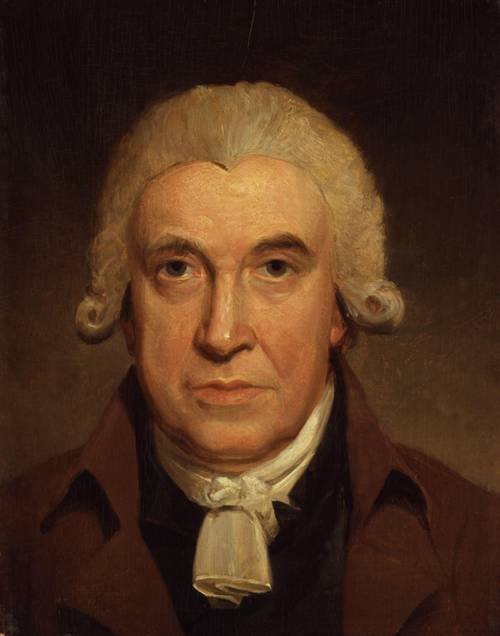
FAQ About James Watt

Who was James Watt?
James Watt was a Scottish inventor and mechanical engineer born on January 19, 1736. He is best known for his significant improvements to the steam engine, which played a crucial role in the advancement of the Industrial Revolution. His enhancements made steam power more efficient and practical for use in a variety of industrial applications.

What contributions did James Watt make to the steam engine?
James Watt made several key improvements to the design of the steam engine. Perhaps the most notable was the introduction of a separate condenser, which greatly increased the efficiency of the engine by preventing energy loss. He also improved the engine's efficiency by designing a rotary motion, which allowed steam engines to power a broader range of machinery.

How did James Watt's steam engine improvements impact the Industrial Revolution?
James Watt's improvements to the steam engine greatly increased its efficiency and power, enabling it to become a viable source of infrastructure and manufacturing power. His innovations allowed industries to move away from being located near water sources, as steam engines could be used anywhere. This flexibility propelled industrial growth and urbanization during the Industrial Revolution.

When did James Watt improve the steam engine?
James Watt began working on improvements to the steam engine in the 1760s. By 1776, alongside his business partner Matthew Boulton, Watt had developed a commercially viable steam engine that was used in various industries.

What is James Watt credited with inventing besides the improvements to the steam engine?
Apart from his steam engine enhancements, James Watt invented several other devices, though they are less well-known. These include a copying machine, which was an early form of the modern copier, and a steam indicator used to measure the pressure within a steam engine.

Did James Watt found a business or company?
Yes, James Watt co-founded a business with Matthew Boulton called Boulton & Watt. Established in 1775, the company produced steam engines and helped implement Watt's innovative designs, becoming one of the most important engineering firms of its time.

Why is the unit of power called a watt?
The unit of power, the watt, is named after James Watt in recognition of his contributions to the development and efficiency of the steam engine. The watt is used internationally as a standard measurement of power, whether electrical, mechanical, or thermal.

What was James Watt's early life like?
James Watt was born in Greenock, Scotland, into a family that was involved in shipbuilding and commerce. He showed an early aptitude for mathematics and engineering. Although he had little formal schooling due to health issues, he continued to study and apprenticed as an instrument maker in London before returning to Scotland to set up his own workshop.

Did James Watt receive any awards or honors during his lifetime?
During his lifetime, James Watt received several accolades for his work, including becoming a Fellow of the Royal Society of Edinburgh and receiving honorary doctorates from several universities. His work was widely recognized, contributing significantly to engineering and industrial processes.

How did James Watt's improvements to the steam engine save energy?
James Watt's introduction of a separate condenser in the steam engine drastically reduced energy loss. By condensing the steam in a separate chamber, it allowed engines to run continuously without constant reheating of the cylinder, which saved a great deal of energy and improved efficiency.

In what industries were James Watt's steam engines commonly used?
James Watt's steam engines were widely used in a variety of industries during the Industrial Revolution. They powered textile mills, coal mines, and ironworks, among others. This versatility helped accelerate industrial growth across economic sectors.

What education did James Watt have?
James Watt did not have extensive formal education due to illness and the lack of formal schooling in his hometown. However, he pursued learning through practical experience and in his apprenticeship as an instrument maker. His self-directed studies and workshop experiments were crucial to his later successes as an engineer and inventor.

What role did Matthew Boulton play in James Watt's career?
Matthew Boulton was a key business partner of James Watt. His financial support and business acumen helped Watt commercialize his steam engine designs. Together, they founded the Boulton & Watt engineering firm, which became instrumental in spreading the use of efficient steam engines across various industries.

How is James Watt remembered today?
James Watt is remembered as a pivotal figure in the field of engineering, particularly for his contributions to the development of the steam engine. His name is immortalized in the unit of power, the watt. Many engineering societies and institutions celebrate his legacy as a pioneer of the Industrial Revolution.

What influence did James Watt's work have on subsequent technological advances?
James Watt's work laid the groundwork for future technological advancements by making industrial machinery more efficient and reliable. His steam engine improvements facilitated rapid progress in transportation and manufacturing, inspiring future generations of engineers and inventors to innovate further in energy and machinery.

Was James Watt involved with any scientific societies?
Yes, James Watt was involved with several scientific societies. He was a Fellow of the Royal Society of Edinburgh and actively engaged with other intellectuals and engineers of his time, contributing to scientific and industrial discussions that helped advance the field of engineering during the Industrial Revolution.

How did James Watt's innovations change urban development during the Industrial Revolution?
James Watt's innovations allowed factories and industries to be located away from natural water sources, which had previously been necessary to power water wheels. This led to urban development and expansion as industries could now flourish in different locations, contributing to the growth of cities during the Industrial Revolution.

What was the original problem with steam engines that Watt aimed to solve?
The original problem with early steam engines was inefficiency, primarily due to heat loss in the cylinder. James Watt aimed to solve this by introducing a separate condenser, thereby improving thermal efficiency and reducing fuel consumption. This made steam engines more versatile and effective for industrial use.

What was the relationship between James Watt and Joseph Black?
Joseph Black, a prominent Scottish chemist, was a mentor and friend to James Watt. Black's work on heat and steam influenced Watt's understanding and further development of steam engine technology. Their friendship and intellectual exchange helped shape Watt's contributions to engineering.

Where can you see James Watt's legacy today?
James Watt's legacy can be seen in numerous museums, educational institutions, and engineering societies worldwide. His contributions are taught in history and engineering courses, and his inventions and models are displayed in exhibits dedicated to the history of the Industrial Revolution and mechanical engineering.
